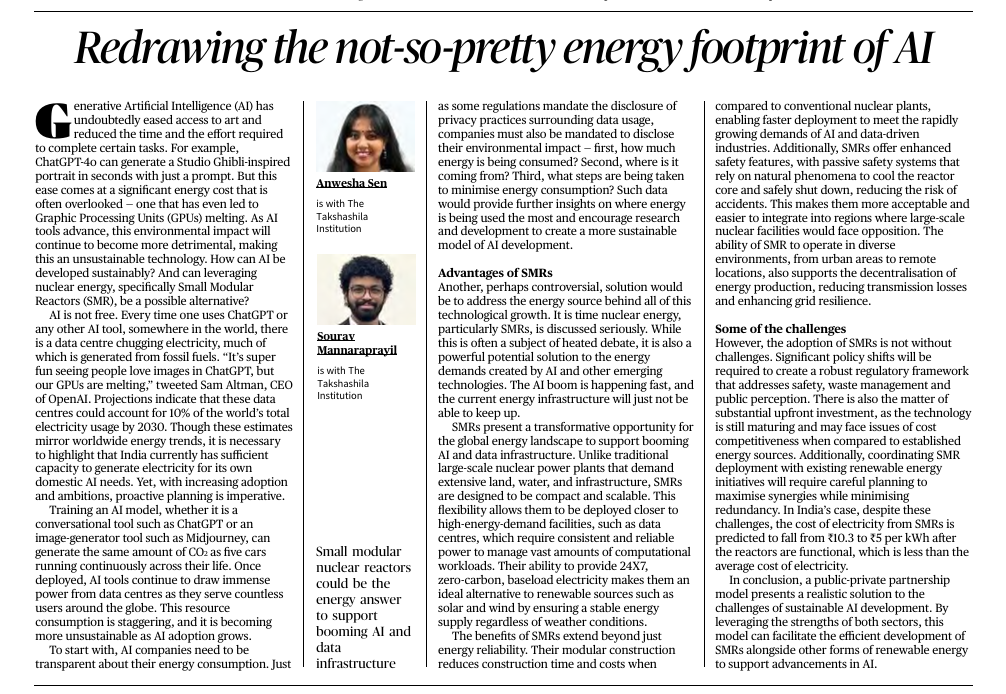GS Paper III: Science & Technology, Environment, Energy
UPSC Mains-style Questions
Q1. Generative Artificial Intelligence (AI) has transformative potential, but it comes at an environmental cost. Examine how Small Modular Reactors (SMRs) could provide a sustainable energy solution to power the AI revolution.
(15 marks)
Introduction:
Generative AI tools like ChatGPT, Midjourney, and others require massive computational power, leading to increased energy consumption. As AI adoption grows, the environmental cost—mainly due to data centres powered by fossil fuels—is becoming a significant concern. This makes the case for integrating cleaner, reliable energy alternatives such as Small Modular Reactors (SMRs) more compelling.
Body:
A. Environmental Impact of AI Deployment
- AI tools rely on power-hungry GPUs and data centers.
- OpenAI’s CEO noted that GPUs are “melting” due to continuous use.
- Studies project AI-related data centres could consume 10% of global electricity by 2030.
- Most current power is from fossil fuels, making this trend unsustainable.
- India’s digital growth means domestic AI electricity demand will spike.
B. What are Small Modular Reactors (SMRs)?
- Advanced nuclear reactors designed to be:
- Modular: Easily scalable and factory-assembled.
- Safe: Use passive safety systems to prevent accidents.
- Flexible: Can be deployed in diverse environments, including urban areas.
- Modular: Easily scalable and factory-assembled.
- SMRs can supply consistent, carbon-free energy to data-intensive industries.
C. How SMRs Can Help Power AI Sustainably
- Decentralised Power Supply:
- SMRs allow energy decentralisation, reducing transmission loss.
- Can support remote or high-demand AI clusters.
- Environmental Sustainability:
- Emit near-zero carbon, unlike coal or gas plants.
- Aid in aligning AI expansion with India’s climate goals.
- Support for Energy-Hungry Tech:
- SMRs can provide the baseload stability needed for 24×7 AI and digital services.
- Facilitate India’s goal to become an AI superpower without ecological compromise.
D. Challenges in SMR Adoption
- High initial cost (₹10.3–₹5/kWh projected).
- Regulatory frameworks for safety, disposal, and siting need development.
- Public perception and opposition to nuclear energy.
- Coordination with existing renewable energy grids is complex.
Conclusion:
As AI reshapes the digital and industrial landscape, its carbon footprint must not be ignored. A public-private partnership model, investing in SMR infrastructure, combined with robust regulation and public communication, could provide a transformative solution. Sustainable AI depends not just on smarter algorithms—but also on smarter energy choices.


